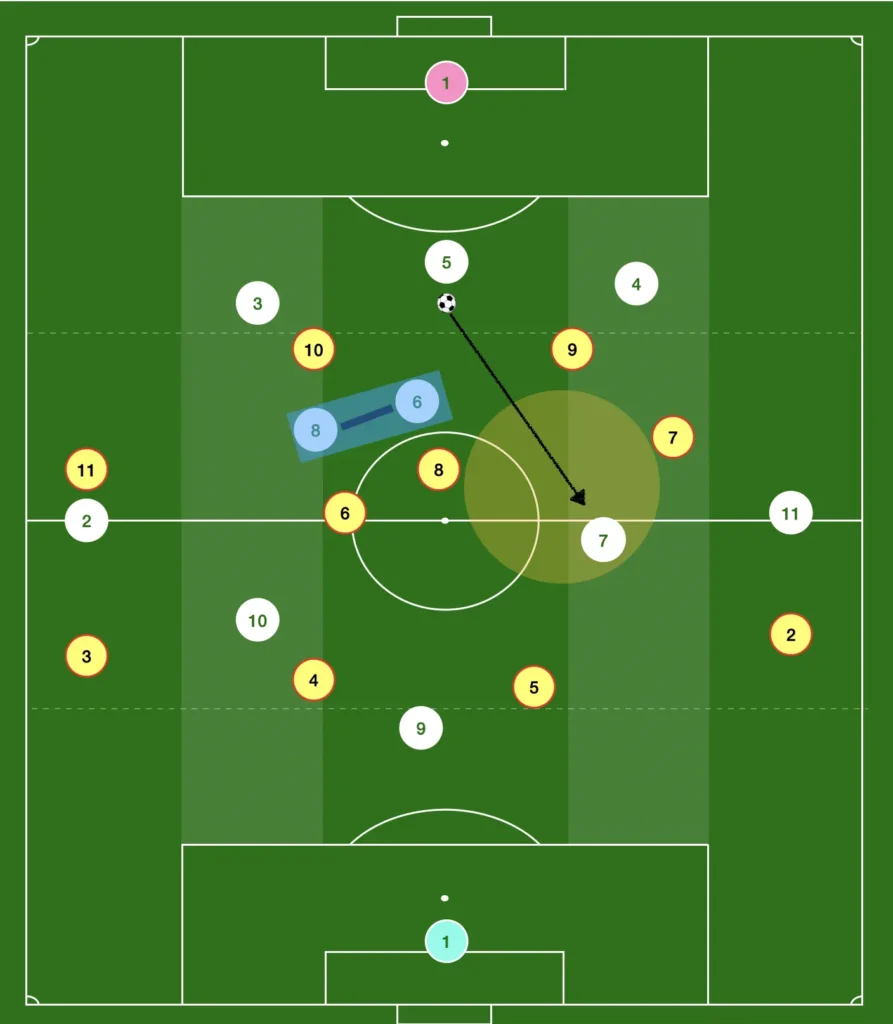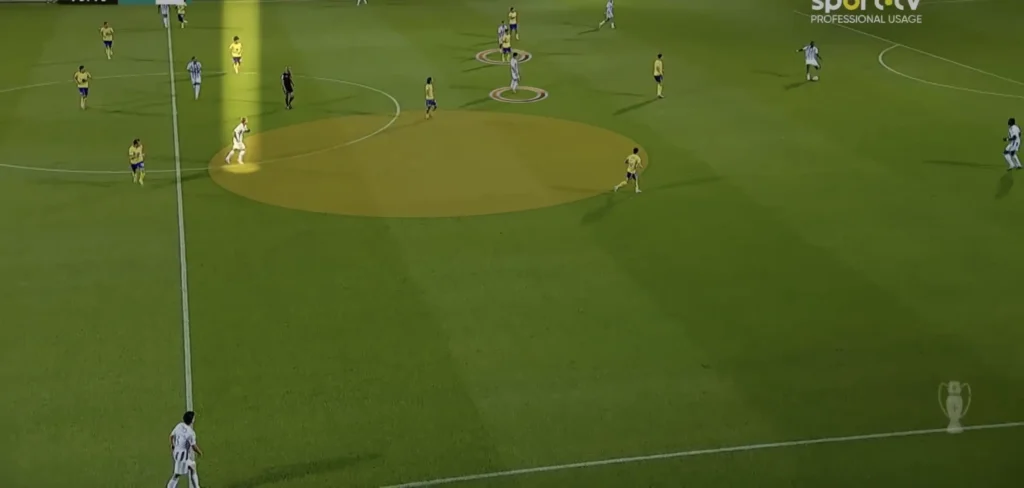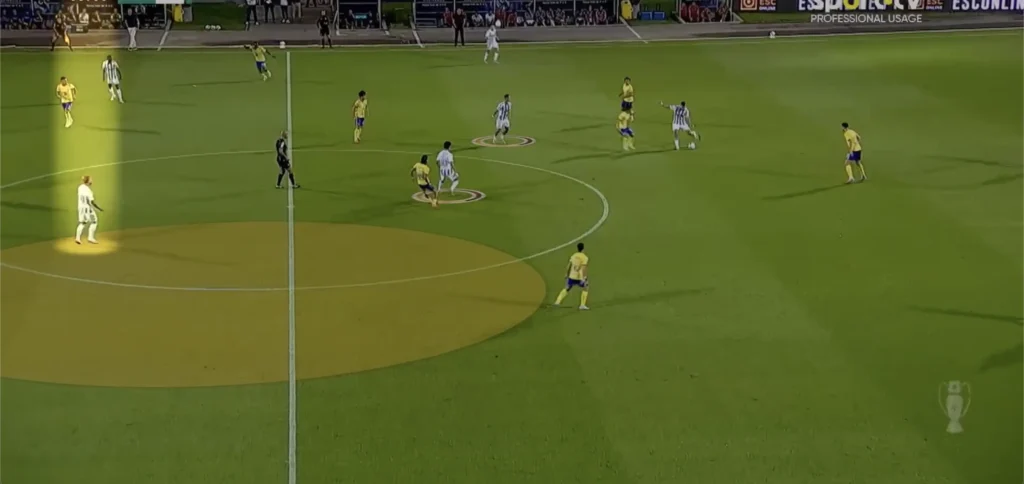Modern football is constantly evolving — yet its core question remains the same: how do you create and control space?
In the 3-4-2-1, that answer often lies in the work of the two number sixes.
Their role isn’t just about defending or covering transitions. It’s about manipulating the opposition’s structure to create windows for progression. By narrowing and dropping in the first phase of build-up, they attract the opponent’s midfielders inside, forcing them to close central lanes. In doing so, they open the half-spaces — exactly where the two number tens are positioned to receive between the lines.

The Midfield Box: Balance and Progression
This simple but intelligent movement forms what we call the midfield box: two sixes who provide control and balance, and two tens who offer creativity and verticality. Once this shape is achieved, the game begins to breathe differently. The centre-backs can now play directly into the tens, the distances between lines shorten, and the team can advance with rhythm and intention.
The structure offers both stability and freedom. The sixes are the foundation — setting the tempo, controlling transitions, and providing security — while the tens become the artists, interpreting spaces and connecting the attack. The synergy between these roles defines how fluidly a team can progress through the thirds.
Control Through Subtle Movements
These are some great examples from Sotiris Silaidopoulos’ Rio Ave, where the precision in the positioning of the double pivot allows the team to dominate the middle third, connect play inside, and unlock attacking zones with clarity. The pattern repeats itself: the sixes drop and attract, the tens appear between lines, and the team moves as a unit to unlock the attacking zones with clarity..


In a well-coordinated 3-4-2-1, the beauty lies in the details you almost don’t see — because when the sixes move correctly, the tens simply appear in space. It’s a shape that embodies control through subtlety, rhythm through structure, and creativity through balance.
The double six is more than a tactical mechanism — it’s the hinge that makes the 3-4-2-1 come alive. When perfectly synchronized, their movement turns structure into fluidity, transforming control into creativity.
